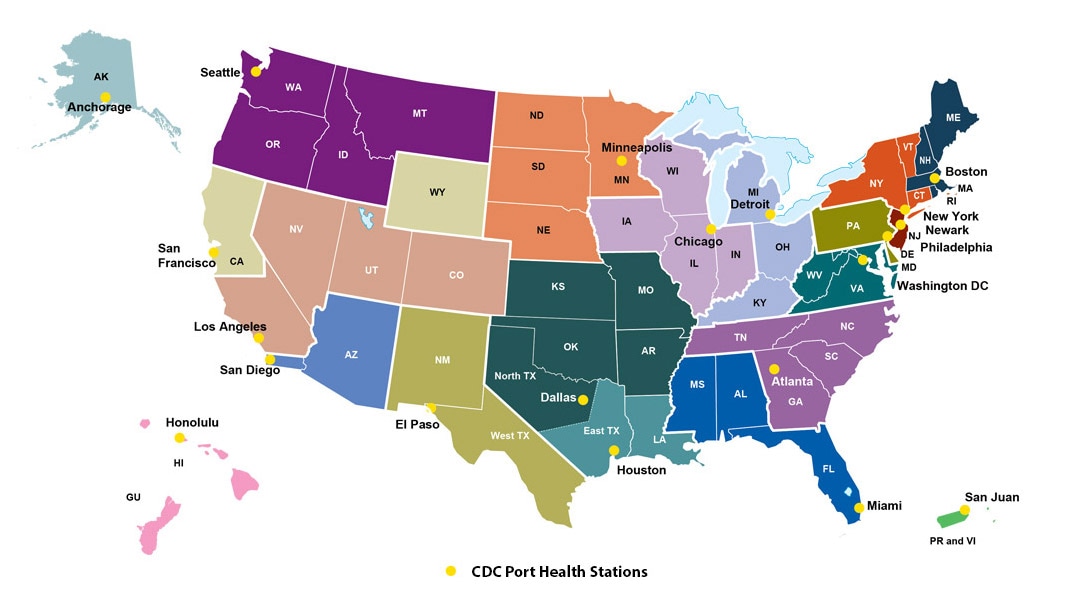At a glance
U.S. Port Health Stations are part of a comprehensive system that serves to limit the introduction and spread of contagious diseases in the United States. They are located at 20 ports of entry and land border crossings where most international travelers arrive. U.S. Port Health Stations are staffed with CDC medical, veterinary, and public health officers and managed by CDC's Division of Global Migration Health.
CDC Port Health Stations and their Jurisdictions
Port Health Stations

Port Health Station Contact Information
Authority
CDC has the legal authority to detain any person who may have a communicable disease that is specified by Executive Order. CDC can also require medical examination and isolation or quarantine for a period of time to prevent the spread of disease.
Activities
Port health officers decide whether ill persons might have a contagious disease that poses a public health threat and what measures should be taken to prevent the spread of contagious diseases.
They are responsible for various activities including:
Response
- Respond to reports of illnesses on airplanes, maritime vessels, and at land border crossings
- Distribute immunobiologics and investigational drugs
- Plan and prepare for emergency response
- Provide travelers with essential health information
Migration
- Monitor health and collect any medical information of new immigrants, refugees, asylees, and parolees
- Alert local health departments in the areas where refugees and immigrants resettle about any health issues that need follow up
- Respond to mass migration emergencies
Inspection
- Inspect animals, animal products, and human remains that pose a potential threat to human health
- Screen cargo and hand-carried items for potential vectors of human infectious diseases
Partnerships
- Build partnerships for disease surveillance and control
Partners in Protection
CDC relies on an important network of partners who are part of the comprehensive system that supports the public health work of the U.S. Port Health Stations including, but not limited to:
U.S. government agencies
- Fish and Wildlife Service
- Department of Agriculture: Animal Plant and Health Inspection Services
- Food and Drug Administration
- Department of State
- Department of Homeland Security: Customs and Border Protection, the Transportation Security Administration, Coast Guard
- Department of Transportation: the Federal Aviation Administration
- Federal Bureau of Investigation
Travel industry
Airline associations, cruise line associations, and port agents
Public health and medical care
State, tribal, local, or territorial public health departments and laboratories, hospitals, health care providers, and emergency medical services
International
World Health Organization, International Organization for Migration, Public Health Agency of Canada, Secretariat of Health (Mexico), and other border authorities and foreign governments
